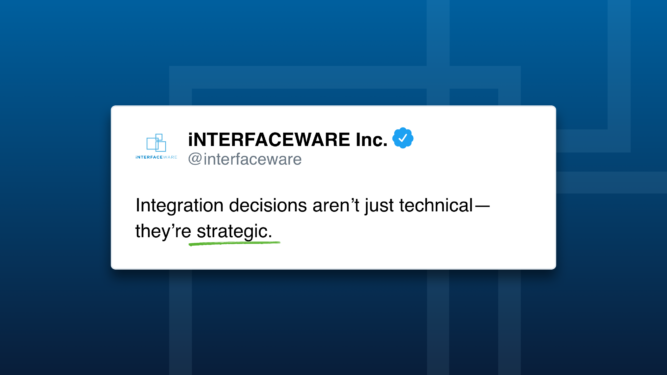
Imagine this: You’re leading an IT team at a growing healthcare organization, and you’ve just been tasked with a major initiative—integrating your internal applications with your EMR system, an HIE, or a data warehouse. You need to automate data exchange, ensure compliance, and create a scalable solution that will support future growth.
Now comes the big question: Do you build an integration engine in-house, or do you adopt an existing solution that’s purpose-built for this challenge?
This is the exact situation one of our recent prospects (a national healthcare provider) found themselves in. Like many organizations, they were trying to determine whether to invest developer resources in building custom workflows or leverage an existing integration platform that could fast-track their success.
Here’s what we learned from that conversation—and why so many organizations are rethinking their approach to healthcare integration.
The Common Challenges Healthcare Organizations Face
1. The Hidden Costs of Building from Scratch
The initial idea of building a custom integration from scratch can be appealing. You have full control over the architecture, and it seems like it could be tailored to your exact needs. In fact, these are many of the same tenets we advocate and follow in our own company philosophy.) But as many teams quickly realize, building an integration engine is more than just coding—it requires ongoing maintenance, security updates, infrastructure management, and troubleshooting.
The organization we spoke with estimated that internal development could take 6-12 months before they’d have a reliable, production-ready system. And even then, unforeseen complexities like HL7 variations, API rate limits, and security compliance could add more delays and costs. Investing in a pre-built integration engine, on the other hand, would allow them to deploy within weeks, not months.
2. Data Flow Complexity: From HL7 to JSON
Like many healthcare organizations, our prospect was migrating their original data infrastructure to a new data warehouse. Their challenge? Transforming HL7 messages into a JSON format that could be ingested by their Snowflake data warehouse, while also ensuring bidirectional data exchange with their EMR.
This involved not only extracting, parsing, and transforming HL7 messages but also handling the various quirks of their EMR’s API. With a tool like Iguana, they could leverage pre-built connectors and easily map HL7 data into JSON, reducing the manual effort required.
3. Security & Compliance Considerations
Security is always top of mind for healthcare organizations. This group needed to ensure that any solution they chose would support secure connections (e.g., VPN, HTTPS), comply with HIPAA, and have the ablity to provide detailed audit logs for tracking data movement.
A custom-built solution would require significant security planning and testing, while Iguana already had built-in log encryption and monitoring—key features that healthcare IT teams need to ensure compliance without reinventing the wheel.
Why They Chose to Buy Instead of Build
After evaluating the effort required to build their own integration system, our prospect realized that leveraging a proven integration engine would allow them to move faster and allocate their developer resources elsewhere. Here’s what ultimately led them to consider Iguana:
- Faster Time to Value: Instead of spending months coding and debugging interfaces, they could deploy an integration within weeks.
- Built-in HL7 & FHIR Support: No need to create custom HL7 parsers from scratch or worry about handling FHIR complexities.
- Security & Monitoring: Compliance-ready logging, error tracking, and secure connections already included.
- Scalability: They saw the potential to reuse and extend integrations without starting from scratch each time.
- Expert Support: Our team could help them get their first integration up and running, reducing internal training and onboarding time.
By making the decision to invest in a flexible, developer-friendly integration platform, they ensured that their organization could focus on what really matters: delivering better healthcare outcomes through data-driven insights.
Is Your Organization Facing the Same Challenges?
If you’re wrestling with the build vs. buy dilemma, you’re not alone. Healthcare organizations across the industry are rethinking their approach to integration, recognizing that the real cost of building is often higher than expected—both in terms of time and resources.
Iguana is built for teams that want full control over their integrations without the burden of maintaining an entire integration infrastructure from scratch. However, we understand there are specific situations where building your own solution may still make sense.
If you’re uncertain about the best integration strategy for your organization, we’d be happy to have a conversation—no pressure, just helpful guidance.
